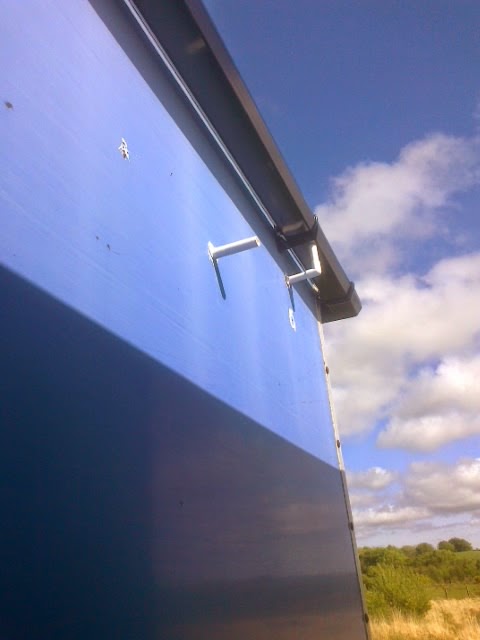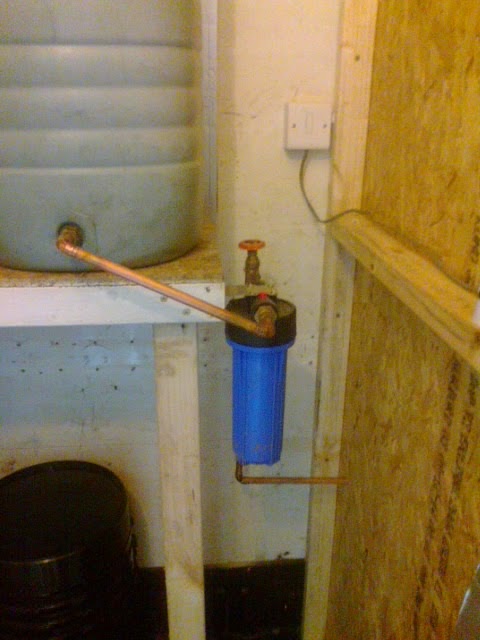The problem boiled down to stiffness in the linkages from the blade control lever to the hydraulic valvegear. The swivels on the rotating linkages were pretty rusty and the lateral linkages weren't in the best of shape either. A good soaking with penetrating oil then some beasting with a hammer and the linkages are now free, if a little stiff. Before lunch the 'dozer was working.
I needed to make a small reinforcing plate for the top pivot bracket. The bracket itself was a nice thick 'U' bracket, but it was bolted through a very thin steel plate and this steel was flexing rather than the effort travelling down the linkage.
All reassembled, plate fitted and I went to start the engine, and it wasn't having any of it. The chap over the road had borrowed it and returned it pretty empty so our first thought was fuel starvation. We filled the diesel tank, and tried again, but after a minute or so of coughing and hunting, it gave up again then completely refused to even try firing. Eco had a spare fuel filter kit, so we purged the fuel lines, fitted new filters and a complete main filter housing and put everything back together again. Still it refused to play ball. There wasn't a lot of fuel showing in the filter glasses, and we'd noticed that we couldn't hear any 'ticking' from the electric fuel pump, so I looked into the cause of that. Turns out I had slightly dislodged a multi-way connector on the control panel during my ferreting around in the mechanics, and as soon as I waggled it a little, the fuel pump kicked in. One more try of the starter button and she roared into life.
New filters, fuel system as per manufacturers setup (rather than retro-fit inline filters) and all is as it should be. The 'dozer blade works fine now and we're back in operation. The linkages are still a little stiff, but a combination of use and more lubrication should ease them back to normal feel, we hope.
Now the toilet floor is dry and traffic-ready, I cleared out all the gubbins in there and you can now get a better view of the slow sand column filter and the plumbing.
A close-up of the electricals. The main incoming feed (6mm) from the external 16A connector runs up a length of mini-trunking and into the digital kWh meter. The 'tails' from the meter are again 6mm cable and feed the RCCD main breaker. A 16A MCB protects the sockets and a 6A MCB protects the lighting circuits. You can just see the earth cable coming in to the bottom of the consumer unit from the TT earth bonding system, and the 2.5mm grey cable runs down to the weatherproof 13A socket which is our temporary feed (via an extension drum) to the other van bodies. Ultimately, each body will have it's own independent power supply and this extra temporary) socket will be removed.
Just a random photo looking out of the office window and across the Goat Field. The Landrover has now had a major oil-leak repaired (the oil feed pipe to the turbocharger had broken) and is now ready to go off and get an MOT.

























